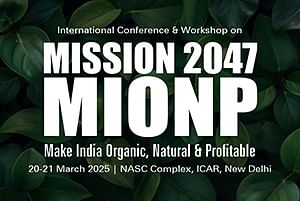
For a very long time, our economies have thrived on a linear model of resource consumption (extraction, utilization, and wastefulness) which has had devastating consequences on society and the environment. This trend has caused serious harm to the environment, aggravating climate change, degrading ecosystems, maintaining inequality, and wasting resources with substantial economic worth. However, a paradigm shift towards a circular economy offers a promising solution to address these pressing issues.
Achieving the Sustainable Development Goals (SDGs) primarily requires adopting circular models and reducing the resource intensity of important economic sectors. This approach is crucial for attaining the objectives outlined in global agreements concerning climate, biodiversity, chemicals, and pollution. In addition, it plays a crucial role in maintaining justice and equity as well as the health of our world and all of its inhabitants.
The Urgent Need for Change
The current trajectory of resource consumption is unsustainable, with resource use tripling over the past 50 years and continuing to increase annually. This trend not only risks global efforts to combat climate change and biodiversity loss but also aggravates inequalities between high-income and low-income countries. It is essential to embrace circularity if we are to move in the direction of a more just and ecologically responsible future.
What is Circular Economy?
Circular economy transcends mere recycling; it entails a comprehensive approach aimed at minimizing resource input, maximizing resource efficiency, and minimizing waste generation throughout a product's life cycle. This entails not only recycling but also reducing and reusing materials, thereby retaining their value within the economy for as long as possible.
Embracing circular economy principles could yield significant advantages, including a 30% reduction in material use, over 80% decrease in greenhouse gas emissions, and a 3% increase in global GDP. By reducing the pressure on the environment, this would help to achieve the Kunming-Montreal Global Biodiversity Framework's objectives. Furthermore, it would foster sustainable land management, enhance food security, and promote a more equitable distribution of wealth.
Key Areas for Action
-
Plastic Pollution: Plastic pollution poses a significant threat to marine ecosystems and human health. Addressing this issue requires concerted efforts to eliminate single-use plastics, promote refill and reuse models, and invest in recycling infrastructure. An internationally binding agreement is essential to tackle plastic pollution comprehensively.
-
Building and Construction Sector: The building and construction sector accounts for a substantial share of global greenhouse gas emissions. Transforming this sector involves prioritizing resilience, renovation, and renewable energy adoption in building practices. Embracing energy-efficient building codes and accelerating retrofitting initiatives are critical steps towards sustainability.
-
Agriculture Sector: Agriculture plays a crucial role in global resource consumption and environmental impact. Embracing circular practices in agriculture involves promoting regenerative farming techniques, reducing food waste, and enhancing nutrient cycling. Additionally, transitioning towards a circular food system entail embracing sustainable agricultural practices, such as agroforestry and precision farming, to minimize environmental degradation while ensuring food security.
-
Textiles and Fashion Industry: The fast fashion industry's rampant consumption and disposal of clothing contribute significantly to environmental degradation. Shifting towards circular business models, such as resale, rental, and repair, can mitigate these impacts while fostering economic growth.
-
Minerals and Metals Management: Efficient management of minerals and metals is essential for the transition to a renewable energy future. Designing products for repair, remanufacturing, and recycling can minimize resource extraction and support sustainable development while safeguarding the rights of affected communities.
Achieving a circular economy requires a multifaceted approach, including institutionalizing resource governance, setting targets for resource efficiency, redirecting finance towards sustainable practices, and promoting consumer awareness and affordability of sustainable goods.
The transition to a circular economy is not merely an environmental imperative but also a pathway towards a more prosperous and just future.
We can create a route towards sustainability, resilience, and shared prosperity for the current and future generations by rethinking our production and consumption practices. Embracing circular economy principles is not just an option but a necessity for a healthier people and planet.
















